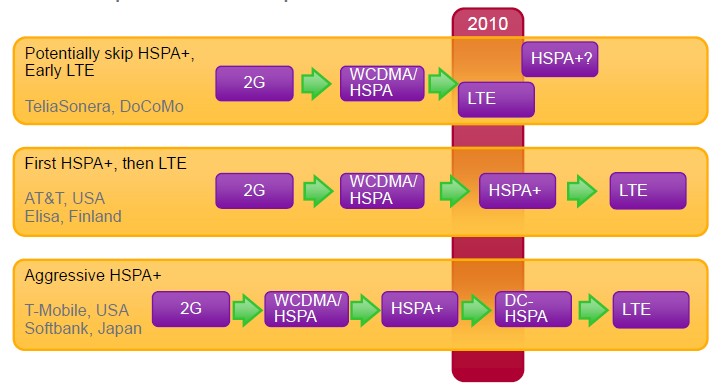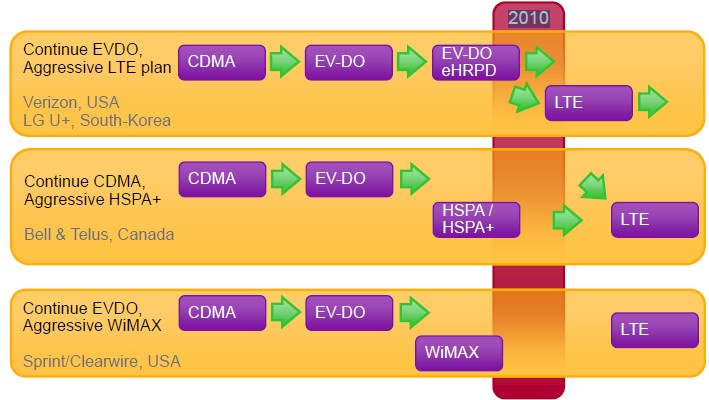What is GSM?
The acronym GSM is a mobile communications system and means “Global System for Mobile Communications”. GSM supports data rates of max. 14.4 kbit / s GSM is the successor system of A, B and C networks and is commercially available in Germany since 1992.
The Global System for Mobile Communications (formerly Groupe Spécial Mobile, GSM) is a standard for fully digital mobile networks, which is used mainly for telephony, but also for circuit switched and packet-switched data transmission and text messages (short messages). It is the first standard of the so-called second generation (“2G”), replacing the analog systems of the first generation (in Germany: A-line, B-grid and C-grid) and is the world’s most popular wireless standard.
What is UMTS (UMTS broadband, 3G)?
The acronym stands for UMTS “Universal Mobile Telecommunication System”. UMTS is a mobile system with speeds of max. 384 kbit / s UMTS is the successor of GSM and commercially available since 2004 in Germany.
The Universal Mobile Telecommunications System (UMTS) is a wireless standard of the third generation (3G), with significantly higher data rates (up to 21 Mbit / s HSPA +, otherwise max. 384 kbit / s) than with the wireless standard of the second generation (2G ), the GSM standard (up to 220 kbit / s in EDGE;. otherwise max is 55 kbit / s in GPRS), possible.
The ITU had UMTS selected for IMT-2000, and it is therefore one of the standards for the third generation mobile communications. Originally, the ETSI (European Telecommunications Standards Institute) had standardized UMTS, today the 3rd Generation Partnership Project (3GPP) maintains it further. The standard is constantly being expanded, for example, increased the maximum HSDPA receive data rate (downlink). For the transmit data rate comparable with HSUPA technology is available.
What is EDGE?
EDGE means “Enhanced Data Rates for GSM Evolution” and is a transmission technique in GSM networks, the transmission rate can be increased theoretically up to 220 kbit/s.
Enhanced Data Rates for GSM Evolution (EDGE) refers to a technique for increasing the data transmission rate in GSM networks by introducing an additional modulation method. GPRS with EDGE data services to E-GPRS (Enhanced GPRS) and HSCSD be extended to ECSD.
EDGE represents an evolution of the GSM technology represents It is basically a GSM with more bits per baud. [1] EDGE with moderate effort can be integrated into mobile networks as it does not disturb the already existing mobile telephony. Essentially, it is necessary to update the software of the GSM base station and optionally to replace individual components.
What is GPRS?
GPRS is “General Packet Radio Service” and is a service between UMTS and GSM networks of permanent connection to devices sustains and transmits data packets only when necessary.
General Packet Radio Service (GPRS) (German: “General packet radio service”), the name given to the packet-based service for data transmission in GSM networks.
If GPRS is activated, only virtually, there is a permanent connection to the remote site (the so-called always-on mode). Only when real data is transmitted, the radio room is occupied, otherwise it is free for other users. Therefore, no permanent radio channel needs (as with CSD) reserved for a user to be. GPRS bills are therefore mainly dependent on the quantity of data transferred rather than connect time. However, this is also dependent on the particular contract terms with the operator.
Unlike the circuit-switched (English circuit switched) CSD data service GPRS is packet-oriented. That is, the data are converted at the transmitter into individual packets, transmitted as such, and the receiver re-assembled.

What is HSUPA?
HSUPA means “High Speed Uplink Packet Access” and is a technique used in the UMTS mobile communication system, the upload speeds up to 5.8 Mbit/s.
High Speed Uplink Packet Access (HSUPA) is a transmission method of the UMTS mobile radio standard that allows higher data rates in the uplink and reduces the round trip time (often referred to as ping). HSUPA Category 6 were up to 5.76 Mbit / s and category 9 (Release 9) up to 23 Mbit / s can be achieved. HSUPA is part of Release 9 of UMTS.
What is HSDPA?
HSDPA means “High Speed Downlink Packet Access” and is a technique used in the UMTS mobile communication system, the download speeds of currently 3.6 Mbit/s to 7.2 Mbit/s. HSUPA is developed commercially since 2007 in Germany.
High Speed Downlink Packet Access (HSDPA, 3.5G, 3G + or UMTS broadband) is a data transmission method of the cellular standards UMTS, which was defined by the 3rd Generation Partnership Project. The method enables DSL-like data rates in mobile networks.
HSDPA is available in Germany, among others by the network operators Vodafone, E-Plus, O2, and telecom and in Switzerland by Swisscom, Sunrise and Orange. In Austria operate the A1, T-Mobile, Orange and Three HSDPA networks.

What is LTE?
LTE means “Long Term Evolution” and a mobile radio system with very high data rates. Long Term Evolution (LTE) is a wireless standard of the fourth generation (4G standard), which can carry up to 300 megabits per second to achieve much higher download speeds. Someone may ask, in the wireless phone abbreviation 4g, what does the “g” stand for? The answer is “g” stand for Generation. The GSM, GPRS and EDGE are 2G (second generation)networks, UMTS/WCDMA/HSPA+/DC-HSPA+ are 3G(third generation) networks, LTE(TD-LTE/FDD) is 4G(Forth generation) network.The basic scheme of UMTS LTE is maintained. Enables rapid and cost-effective retrofitting the infrastructure of the UMTS technology (3G standard) on LTE-Advanced is possible. LTE-Advanced is backward compatible to LTE.

